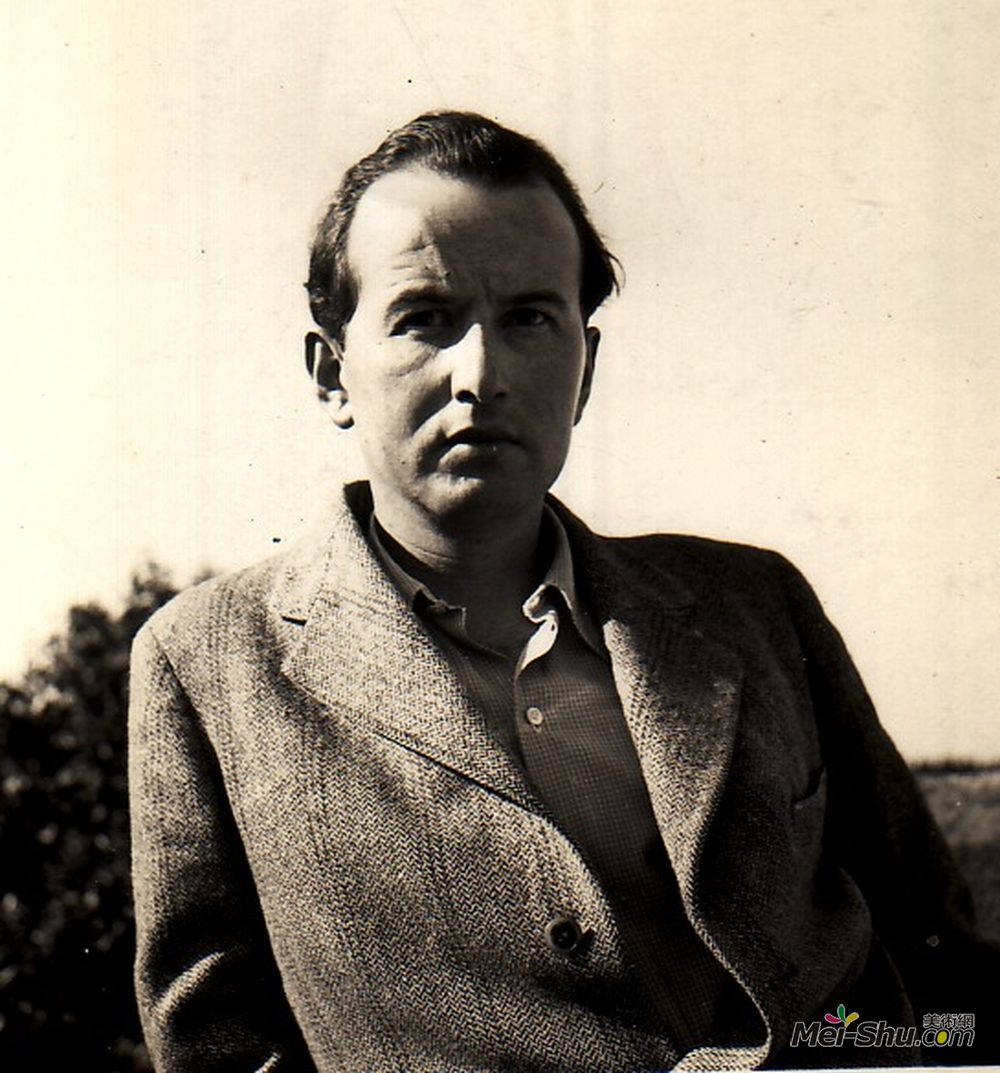
沃尔夫冈帕伦(Wolfgang Paalen)
艺术家: 沃尔夫冈帕伦
生于: 1905年7月07日;奥地利维也纳
卒于: 1959年9月24日;墨西哥塔斯科
国籍: 奥地利,墨西哥
流派: 超现实主义
领域: 绘画,艺术理论
Wolfgang Paalen是一位奥地利墨西哥画家和理论家。他于1905出生于维也纳,是奥地利犹太商人和发明家Gustav Robert Paalen的四个儿子中的第一个,也是他的德国妻子,女演员Clothilde Emilie Gunkel。他生命的最初几年在维也纳和Styria度过,父亲在那里拥有一个时髦的疗养胜地。1912这家人搬到柏林和西里西亚的阿加亚城,在那里他父亲买了一座城堡,圣罗奇斯堡。Wolfgang Paalen在萨根上了不同的学校,在他的父母聘请了一位私人教师之前。
1919,这个家庭搬到了罗马,那里的帕伦斯接待了许多客人,如Leo von K和246;尼格成为沃尔夫冈和39岁的第一任教师。1924,他回到柏林,在那里申请了该学院,但没有成功。1925,他出演了《柏林派》,在美学上又经历了一个新的阶段,深受Julius Meier Graefe、尼采、叔本华和马克斯·韦特海默格式塔理论的影响。在巴黎和卡西斯(1925/26)的一年研究中,他遇见了姬恩(JANCO)瓦尔达和乔治·布拉克,他访问了Hans Hofmann在慕尼黑和圣托佩兹的艺术学校,直到1928。
1928之后,他再次留在卡西斯和巴黎,很快与费尔南德勒庞233,GER和BEC一起学习。阿梅是1933年度团体抽象创作的成员,是安德鲁和233岁的巴黎超现实主义者;1936的布雷顿,参加了他所有的主要展览和宣传活动,直到1939年5月他去纽约。同年,他和妻子、法国画家Alice Rahon和他的朋友Eva Sulzer一起游览了不列颠哥伦比亚。1939年秋天,他应弗里达·卡洛的邀请,在墨西哥定居,与秘鲁诗人C&sar Moro一起,在墨西哥艺术博物馆举办了国际超现实主义者展览。在战争年代,Paalen越来越多地撤退到他在圣安吉尔的新工作室,这是由德国建筑师Max Cetto新建的。
由于他的杂志、他在纽约的出现和展览、1940年的Julien Levy、1945年的Peggy Guggenheim本世纪艺术和1946年的Galerie Nierendorf,他涌入了纽约。明显的抽象表现主义的起源。1949年,他在旧金山与戈登·昂斯洛·福特和李·穆利坎一起在戴纳顿集团工作。1952年,他去了巴黎,1954年又回到了墨西哥。1959年,他在墨西哥的塔斯科自杀。
在与超现实主义者交往的过程中,以及他们试图将自动书写转变成绘画和绘画的过程中,他创造了fumage——一种用点燃的蜡烛的烟雾和烟尘产生唤起共鸣的模式的技术。在1936年到1937年之间,帕伦在画布上用这些有远见的、短暂的形式发展起来,然后他大部分画在油画上,一些成熟的画很快使他在国际上声名鹊起。1938年,他和马塞尔·杜尚、曼雷和萨尔瓦多·达尔&一起在巴黎波克斯艺术宫举办了超现实主义国际展览,他在杜尚用空煤袋的天花板下安装了第一批环境之一。尤其是在四五十年代,Paalen'的艺术在改变抽象艺术观念方面发挥了重要作用。
Artist :Wolfgang Paalen
Additional Name :Wolfgang Paalen
Born : Vienna, Austria
Died : Taxco, Mexico
Nationality :Austrian,Mexican
Art Movement :Surrealism
Field :painting,art theory
Wolfgang Paalen was an Austrian-Mexican painter and theorist. He was born in Vienna in 1905, as the first of four sons of the Austrian-Jewish merchant and inventor Gustav Robert Paalen, and his German wife, the actress Clothilde Emilie Gunkel. The first years of his life he spent between Vienna and Styria where his father had a fashionable health resort. 1912 the family moved to Berlin and to the Silesian city of Żagań, where his father had bought a castle, the St. Rochusburg. Wolfgang Paalen went to different schools in Sagan, before his parents engaged a private teacher.
In 1919, the family moved to Rome, where the Paalens received many guests, such as Leo von König who became Wolfgang's first teacher. In 1924, he went back to Berlin where he applied for the Academy without success. In 1925, he exhibited in the Berliner Sezession and went through a further formation in aesthetics, deeply influenced by Julius Meier-Graefe, Nietzsche, Schopenhauer and the Gestalt theory of Max Wertheimer. After another year of studies in Paris and Cassis (1925/26) where he met Jean (Janco) Varda and Georges Braque, he visited the art school of Hans Hofmann in Munich and Saint Tropez until 1928.
After 1928, he stayed again in Cassis and Paris, studied shortly with Fernand Léger and became a member of the group Abstraction-Creation in 1933 and the Parisian Surrealists around André Breton in 1936, participating in all its major exhibitions and outreach thereafter, until he travelled to New York in May 1939. The same year he traveled through British Columbia with his wife, the French painter Alice Rahon and his friend Eva Sulzer. In autumn 1939 he followed an invitation of Frida Kahlo and settled in Mexico, where together with the Peruvian poet César Moro he curated the International Surrealist Exhibition in the Galería de Arte Mexicano. During the war years Paalen retreated more and more to his studio in San Angel, newly built by the German architect Max Cetto.
Due to his magazine, his presence and exhibitions in New York City, 1940 Julien Levy, 1945 Peggy Guggenheim Art of this Century and 1946 Galerie Nierendorf, he influenced significantly the genesis of Abstract Expressionism. 1949 he worked in San Francisco with Gordon Onslow Ford and Lee Mullican in the Dynaton group, before he went to Paris in 1952 and back again to Mexico in 1954. He committed suicide in 1959 in Taxco, Mexico.
In the course of his association with the Surrealists and their attempts to transform automatic writing into drawing and painting, he created fumage – a technique for generating evocative patterns with the smoke and soot of a lit candle. Between 1936 and 1937 Paalen developed with these visionary-ephemeral forms on canvas, which he then mostly painted over in oil, a number of mature paintings which soon made his international reputation. Together with Marcel Duchamp, Man Ray and Salvador Dalí he was among the responsibles for the design of the International Exhibition of Surrealism in the Palais des Beaux Arts in Paris 1938, where he installed one of the first environments beneath Duchamps ceiling of empty sacks of coal. It was particularly in the forties and fifties that Paalen's art played a major role in changing the conception of abstract art.